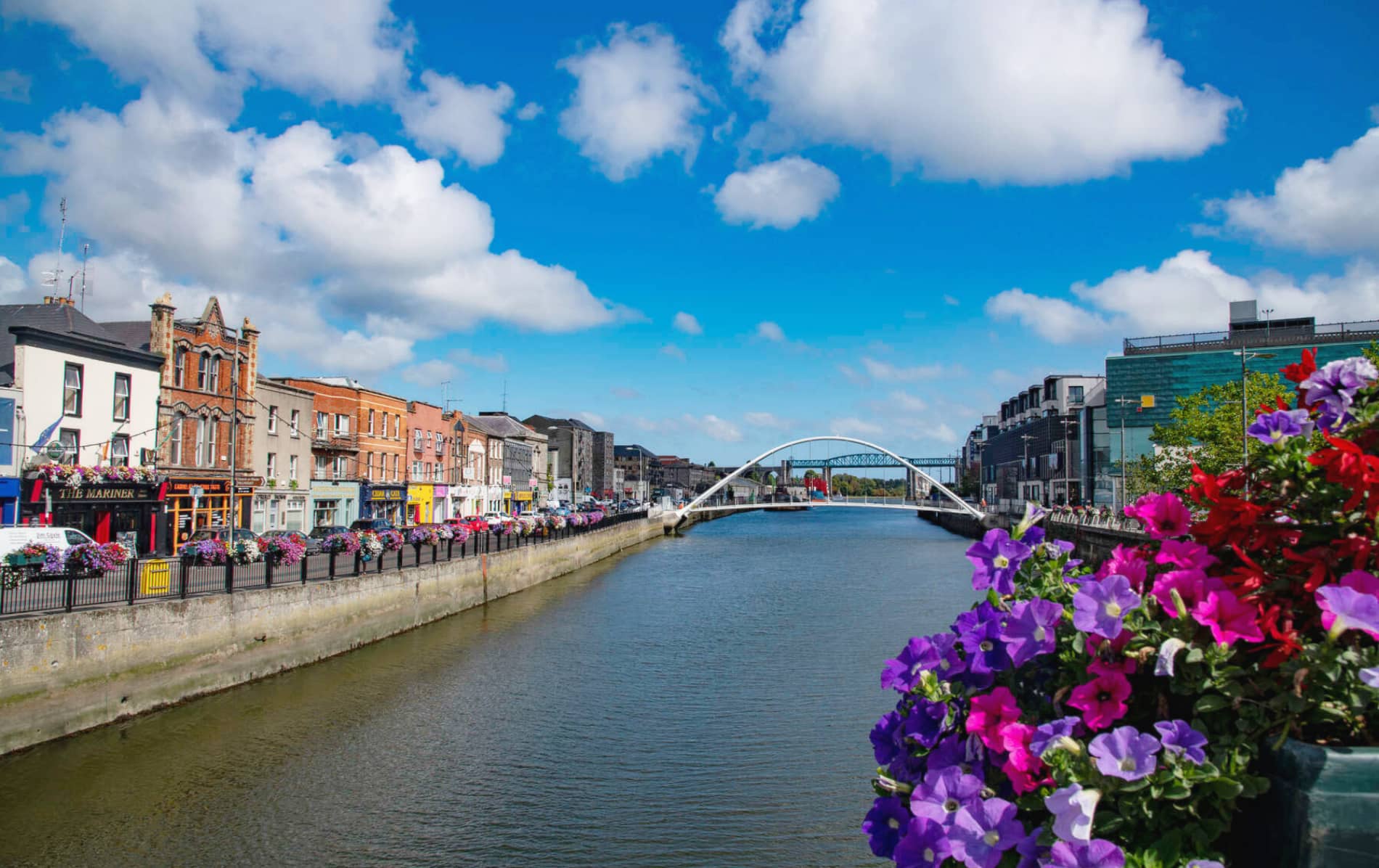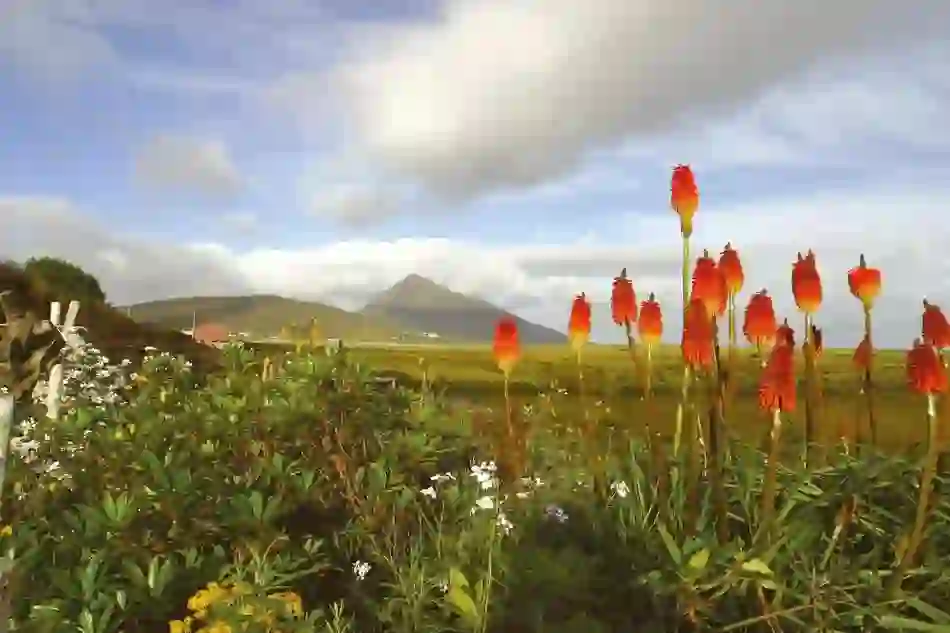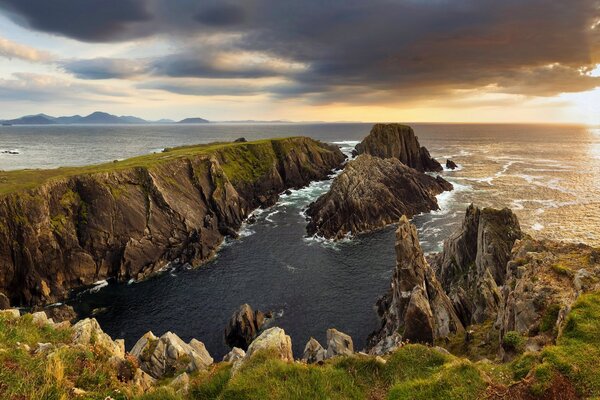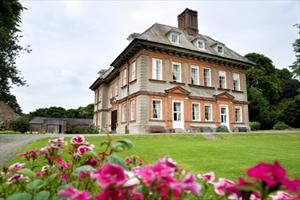

County Louth
Carlingford Lough, County Louth
Despite its size, this county is home to some of the Boyne Valley’s greatest historical treasures, intriguing legends, and a beautiful stretch of coastline. Not only that but it also boasts the buzzing town of Carlingford and Drogheda.
County Louth
L-R: Carlingford Lough; Carlingford Oyster Festival; Monasterboice High Cross; Mellifont Abbey
The Cooley Peninsula doesn’t just look amazing, it’s a landscape steeped in Irish mythology. Slieve Foy is said to be the resting place of the legendary hero, Fionn Mac Cumhaill.
The peninsula was central to the Táin Bó Cuailgne legend from 12th century Irish literature (often translated as The Cattle Raid of Cooley), which tells the epic saga of Queen Medb of Connacht and the warrior Cú Chulainn.
You can take in the “legendary” sights of County Louth along the Táin Way, a 40km looped walk that can be started or finished in either Carlingford, Omeath or Ravensdale. Along the way, admire the Mourne Mountains across the water in County Down, as well as the beautiful coastline, and charming towns and villages.
But much of the beauty is directly surrounding you – the Carlingford shoreline is listed under a European Habitats Directive as a specially protected area for flora and fauna.
Louth boasts an impressive coastline – stretching over 88km from Carlingford Lough to the beaches of Baltray. And one of the highlights of the coast is the lively town of Carlingford, which offers everything from canoeing and catamaraning to stand up paddle boarding, ferry trips and sunset cruises.
Carlingford wears its medieval and Viking influences on its sleeve. The name comes from the Old Norse and means “Bay of the hag”. Luckily the area, is a lot more picturesque than its name might suggest.


Carlingford
Strolling its small, narrow streets, you’ll find Tholsel Street (named after a gaol that used to be here) where you’ll spy the medieval town gates. You’ll also pass The Mint, a fortified townhouse built sometime in the 15th or 16th century with ornately decorated windows.
While walking around the town and peninsula, you'll get a sense of how much the area has to offer. You’ll pass a state-of-the-art adventure centre, the Carlingford Brewing Company, and a bike hire shop, ready to help you see the sights. There’s a thriving seafood scene here that would do credit to a small city, and the restaurants are on hand to provide you with one of the famous Carlingford oysters.


Drogheda, County Louth
Next up is Drogheda, which was once one of the largest walled medieval towns in Ireland.
Historic hotspots here include the 19th century Martello Tower at the Millmount Museum, which both Mellifont Abbey and Monasterboice are close by. At the latter, look out for the 10th century Muiredach’s Cross – a 5.5m high cross with panels displaying biblical scenes, all carved from a single block of sandstone. Back in town, make sure to stop at St Peter’s Church, which is famous for its shrine to St Oliver Plunkett (1625-81), the last Catholic martyr to die in England – at the centrepiece of its shrine is the saint’s grisly preserved head.
If you have a spare hour, try the Clogherhead Cliff Walk, which takes in the coastline and affords some great views of the nearby Cooley and Mourne Mountains. Afterwards, finish your walk on Clogherhead Beach and take a refreshing dip in the Irish Sea.
Finally, make sure not to miss Drogheda's arts and heritage scene while you're here. Highlanes Gallery is an art gallery housed in a former Franciscan Friary Church and Droichead Arts Centre hosts a thriving modern theatre. Plus, with the Drogheda Arts Festival held in April and the Boyne Musical Festival held in July, you won’t be short of things to see and do here anytime you visit!
Welcome to the little county that could!
County Louth highlights
Don't miss these things to see and do




































































